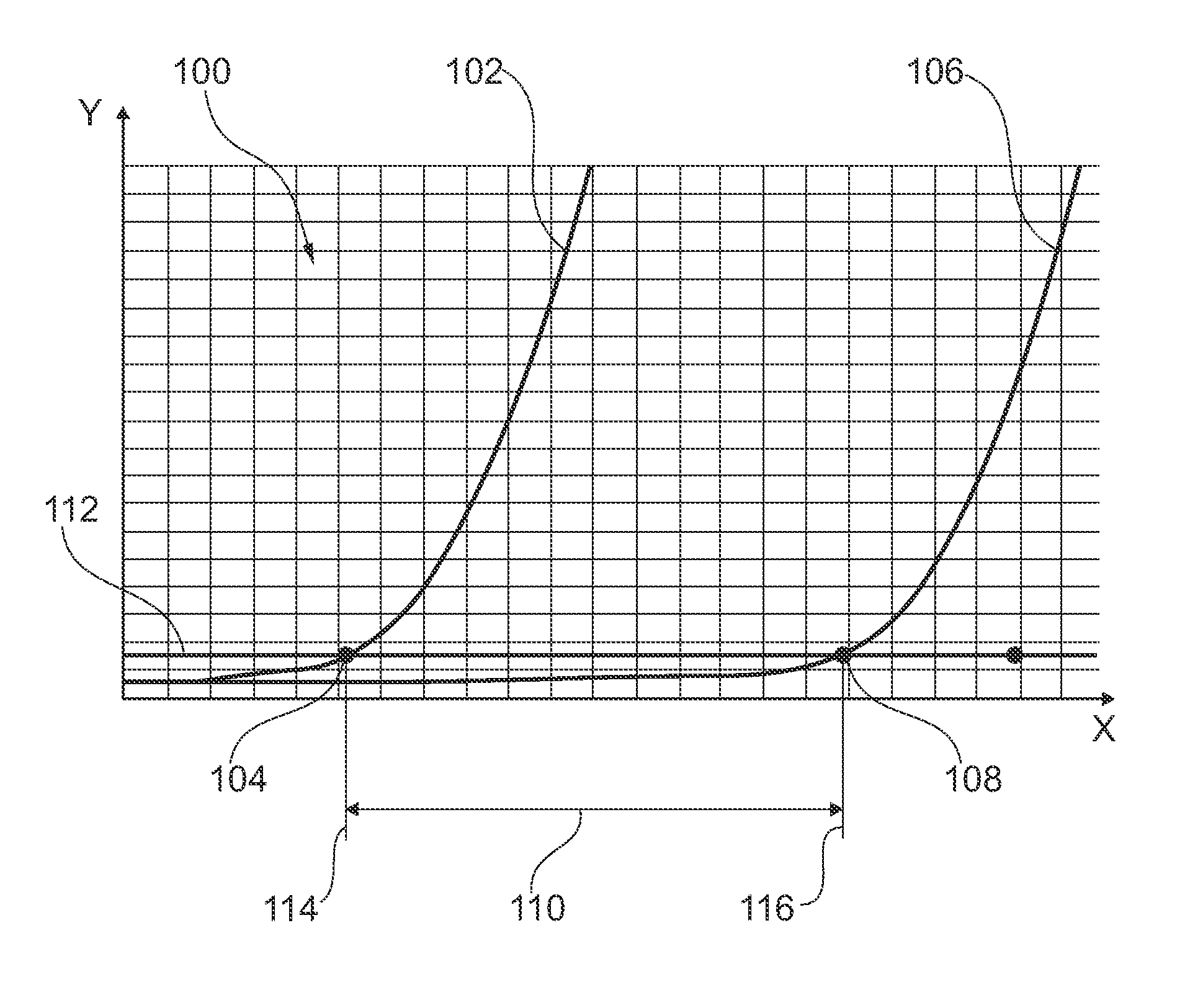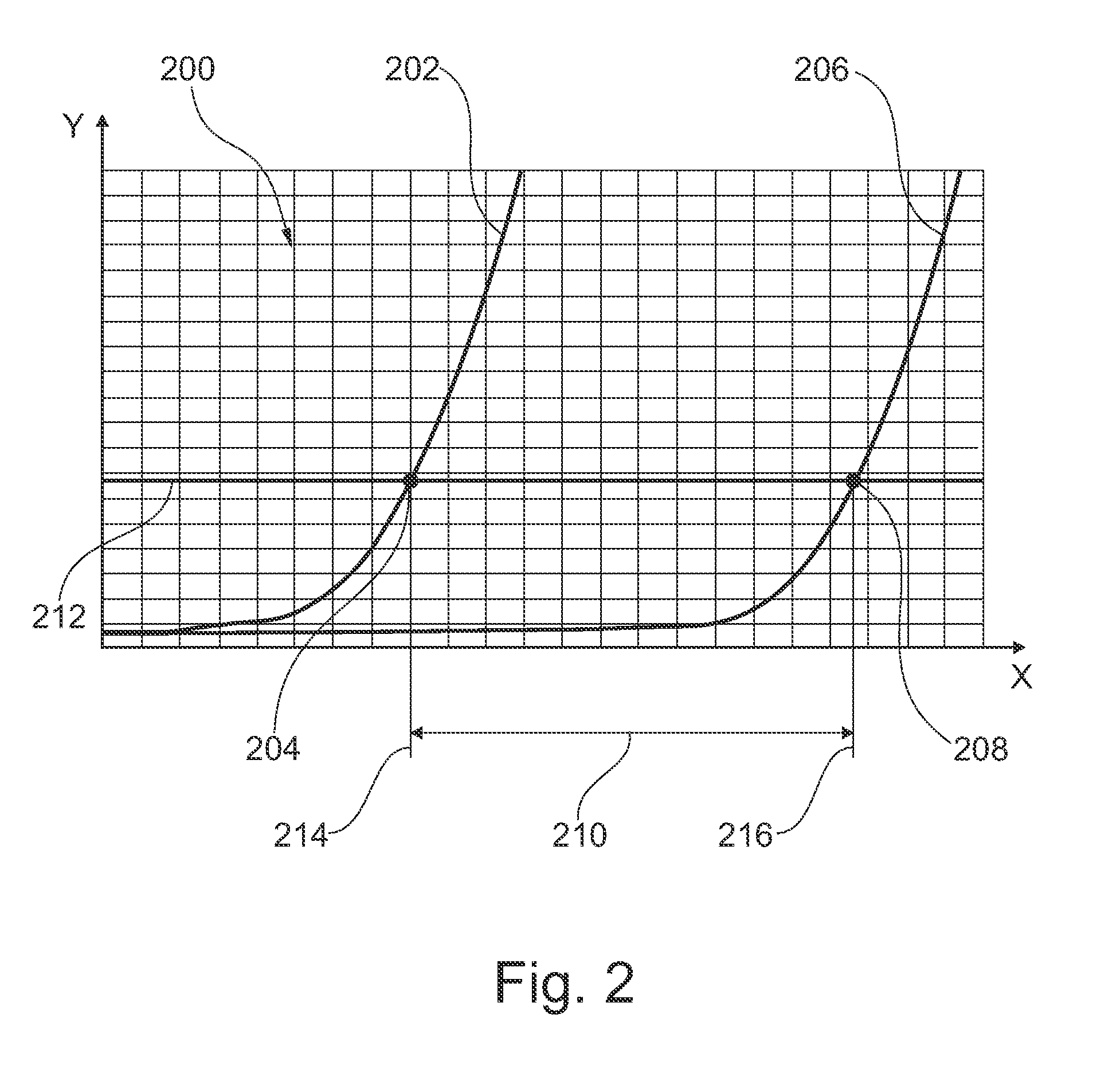Method for determining wear of a friction plate
a friction plate and friction lining technology, applied in the direction of machine part testing, computation using non-denominational number representation, complex mathematical operations, etc., can solve the problem of too complex and expensive types of wear determination, too complicated and expensive for merely determining the thickness of the clutch lining, etc., to prevent the depreciation of function due to a worn friction lining, the effect of reliably determining friction wear in a time interval
- Summary
- Abstract
- Description
- Claims
- Application Information
AI Technical Summary
Benefits of technology
Problems solved by technology
Method used
Image
Examples
Embodiment Construction
[0025]Diagram 100 shown in FIG. 1 pertains to an automatically operated friction clutch of a motor vehicle driven by an internal combustion engine. The friction clutch is situated between the combustion engine and a transmission, and has an input part on the combustion engine side which includes a housing or cover, a pressure plate and an opposing pressure plate. The cover is rigidly connected to the opposing pressure plate, for example by riveting; the connection of the pressure plate is rotationally fixed but axially movable. On the transmission side, the clutch has an output part which includes at least one clutch plate with friction linings.
[0026]However, the friction clutch may also be a dual clutch having on the combustion engine side an input part that includes a housing or cover, a pressure plate, an intermediate pressure plate and an opposing pressure plate. On the transmission side the dual clutch has a first and a second output part, each of which includes at least one cl...
PUM
 Login to View More
Login to View More Abstract
Description
Claims
Application Information
 Login to View More
Login to View More - R&D
- Intellectual Property
- Life Sciences
- Materials
- Tech Scout
- Unparalleled Data Quality
- Higher Quality Content
- 60% Fewer Hallucinations
Browse by: Latest US Patents, China's latest patents, Technical Efficacy Thesaurus, Application Domain, Technology Topic, Popular Technical Reports.
© 2025 PatSnap. All rights reserved.Legal|Privacy policy|Modern Slavery Act Transparency Statement|Sitemap|About US| Contact US: help@patsnap.com



